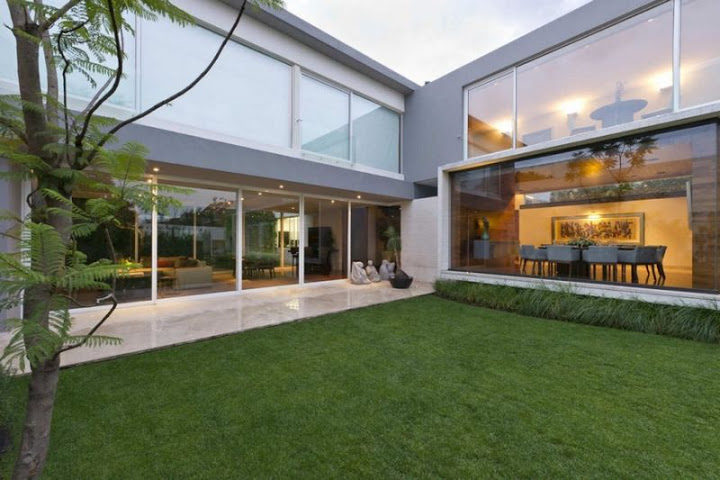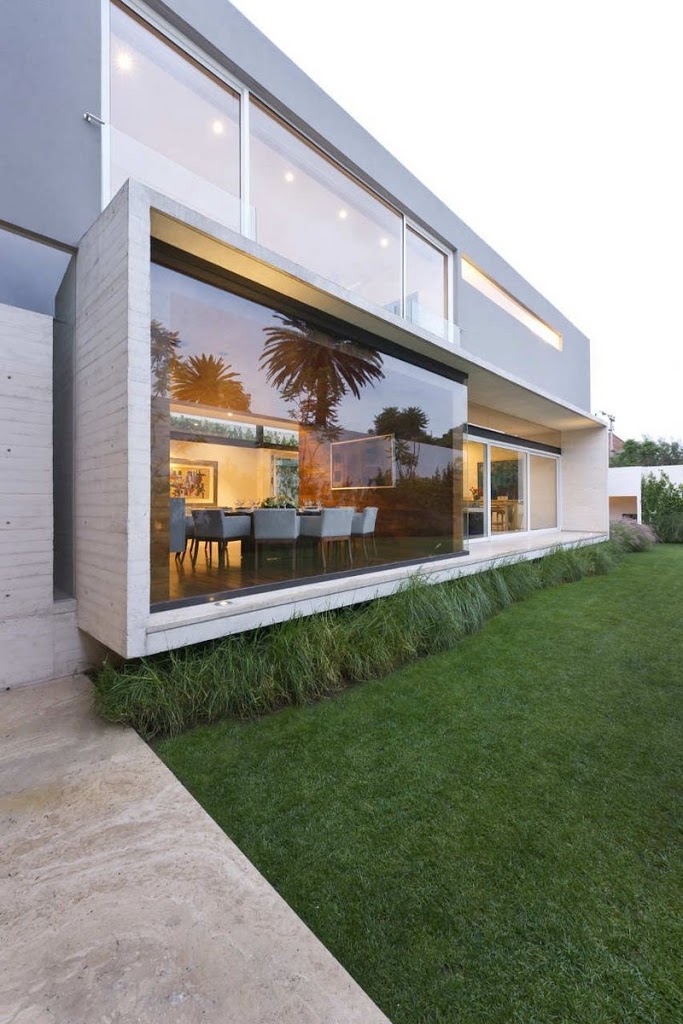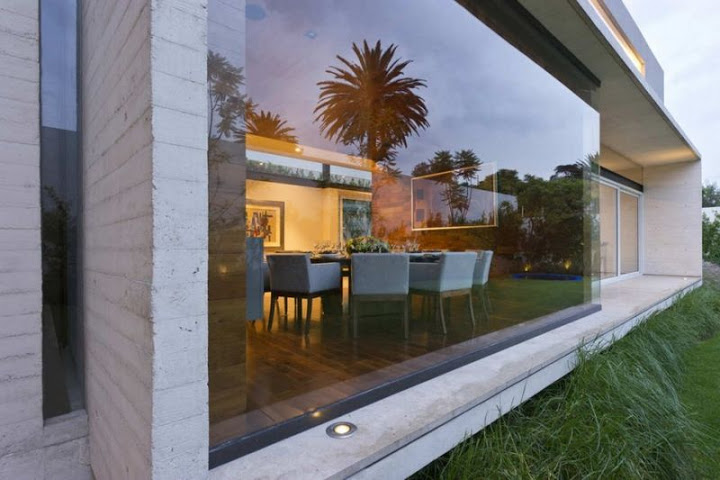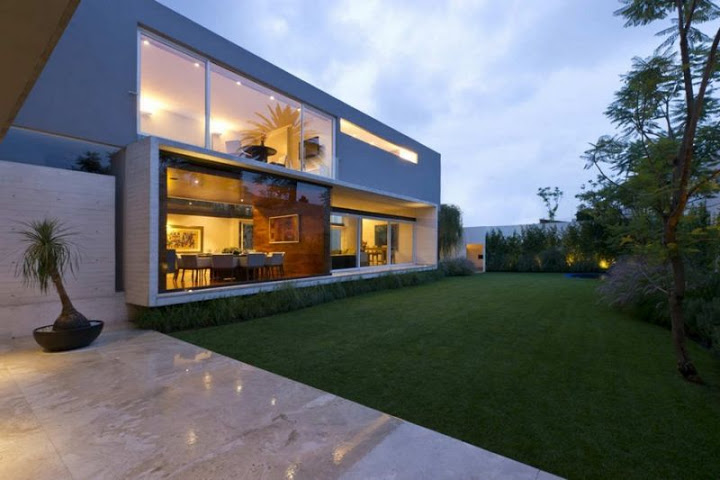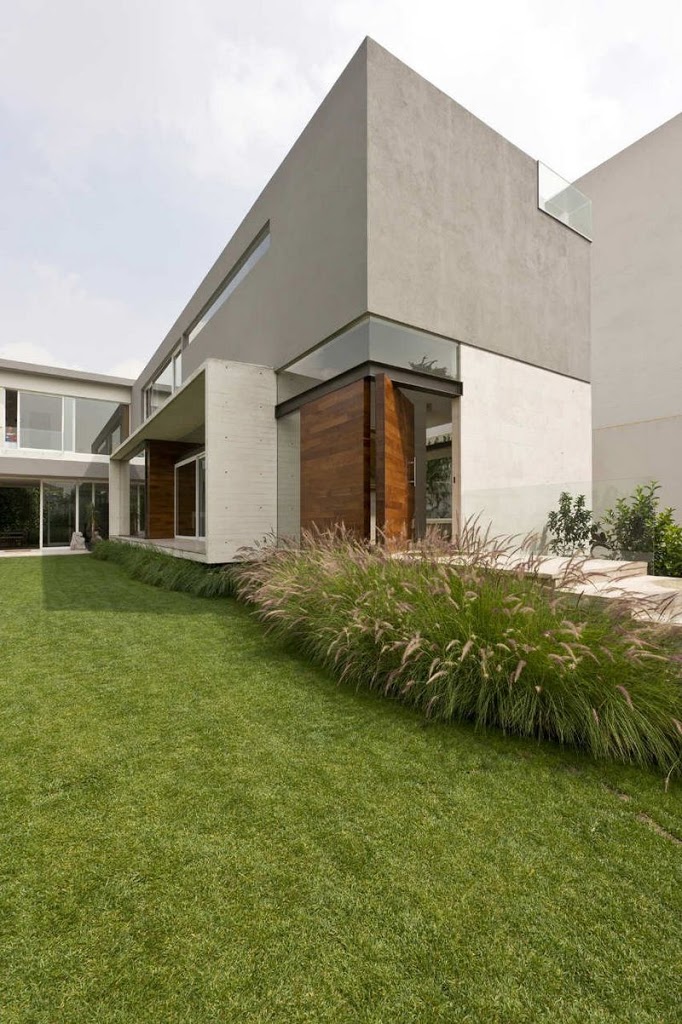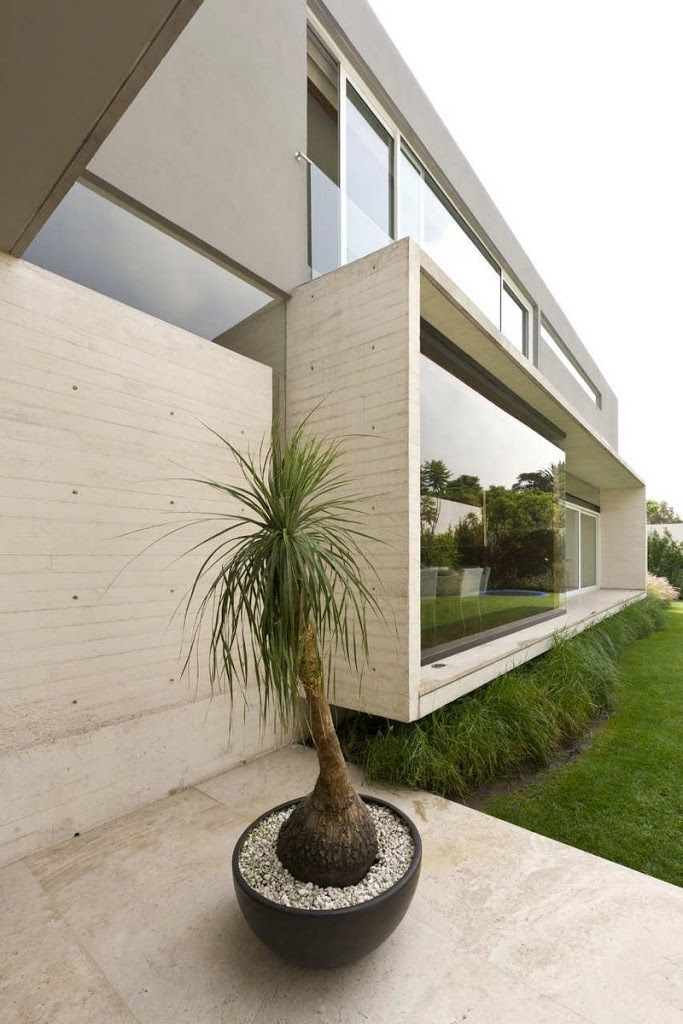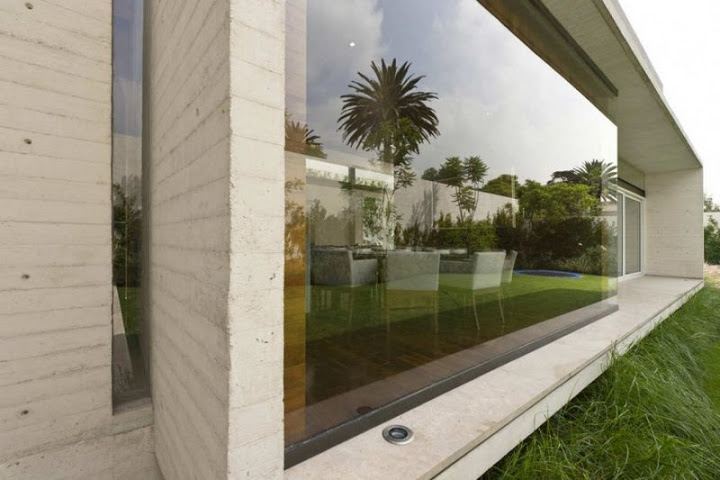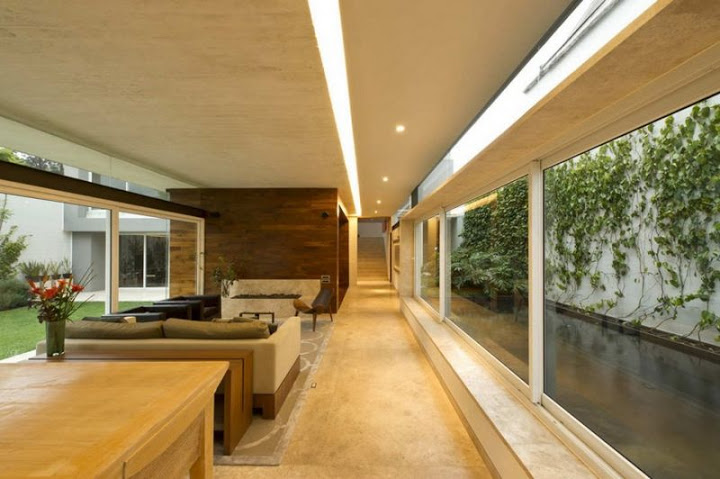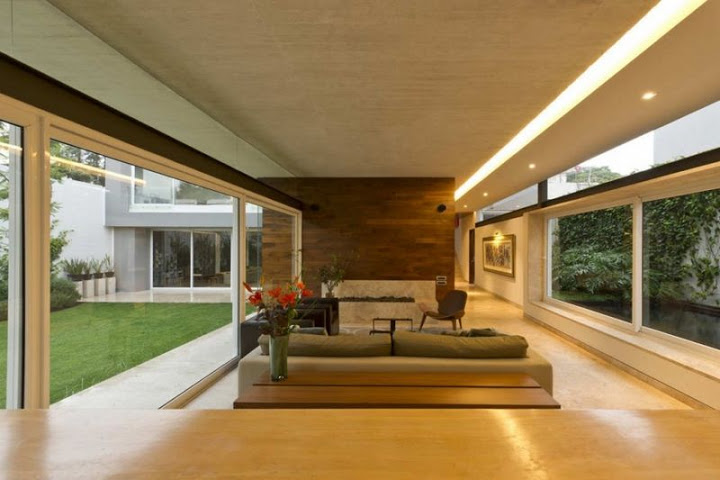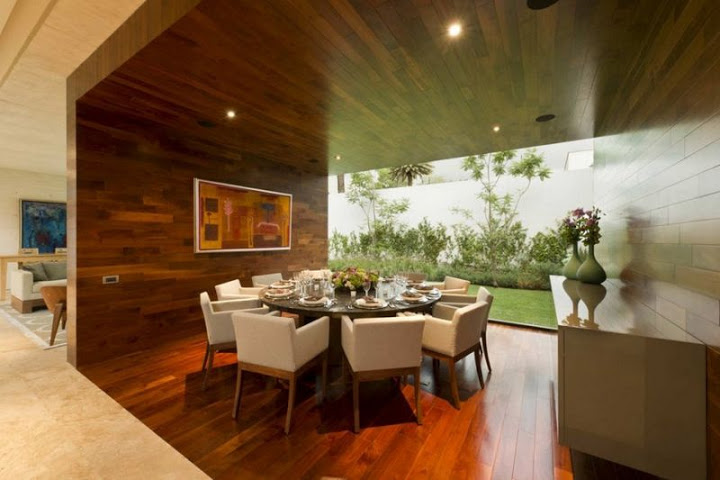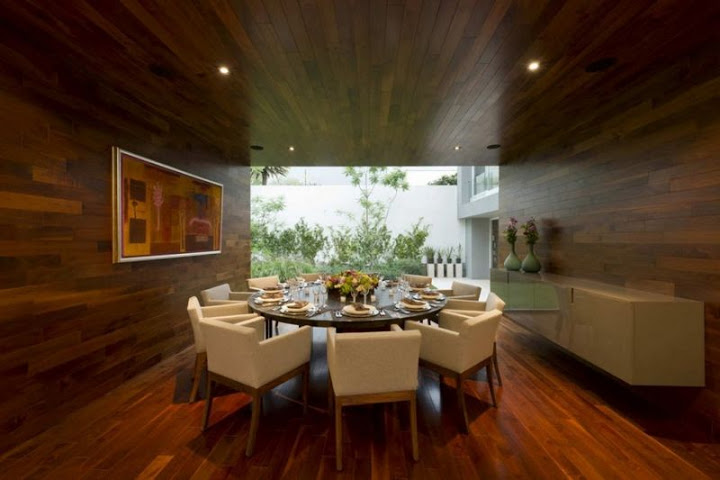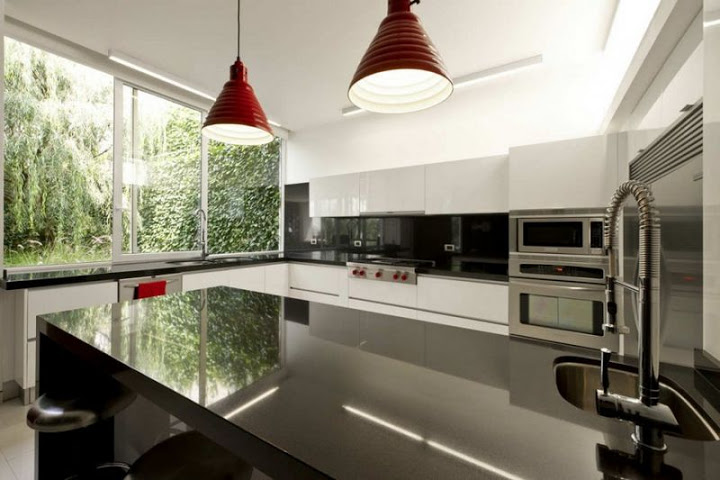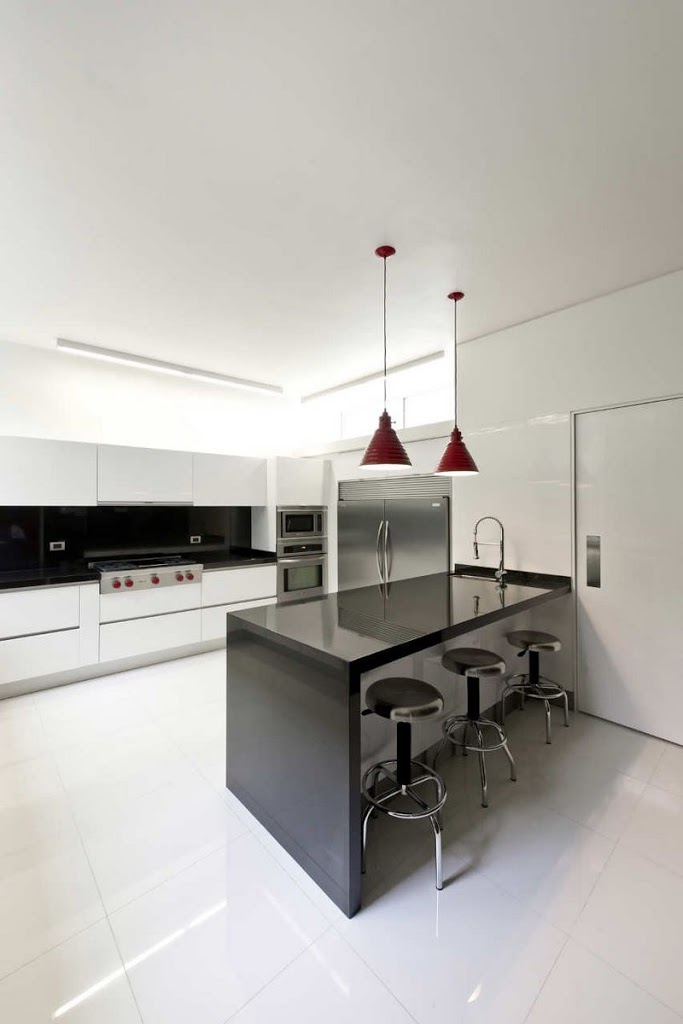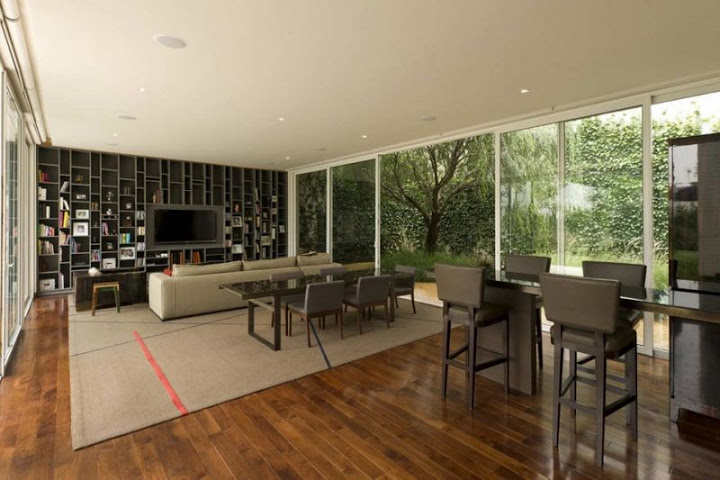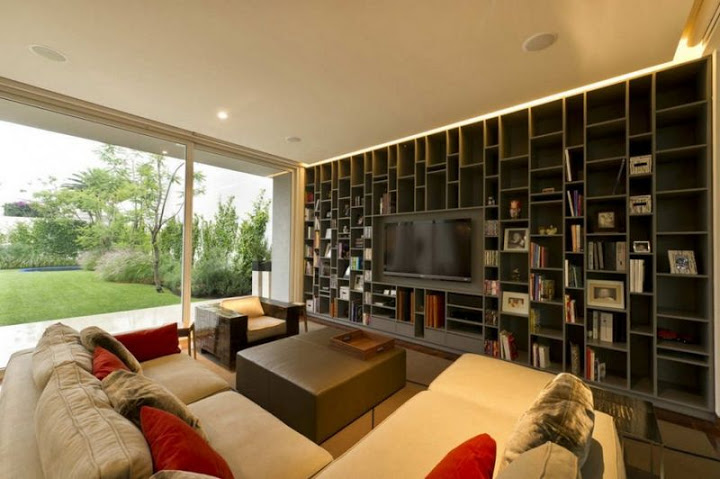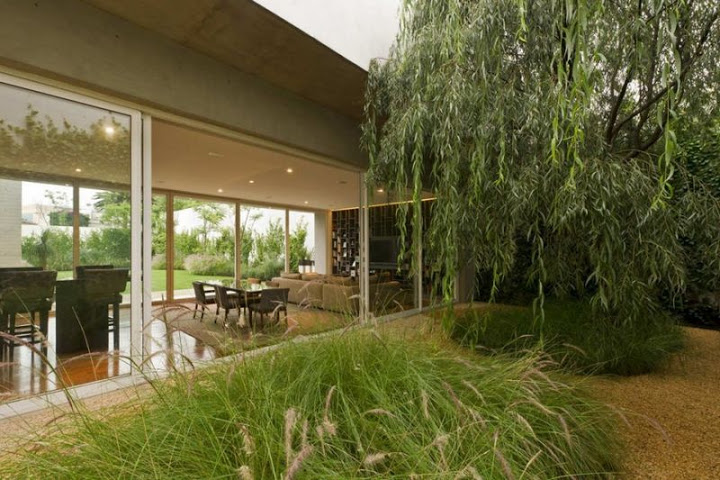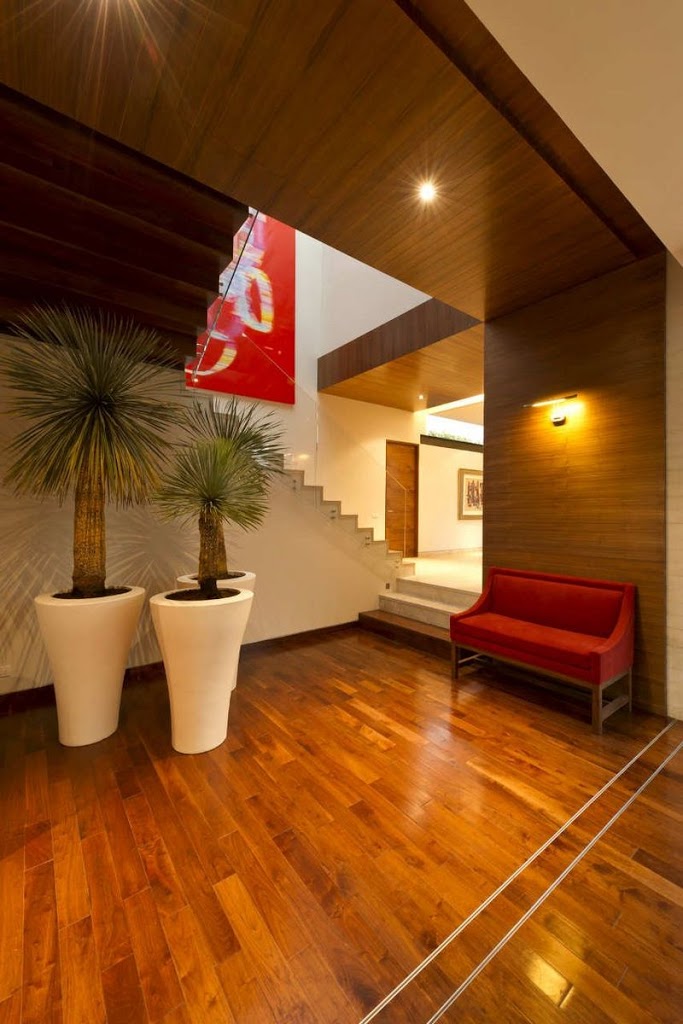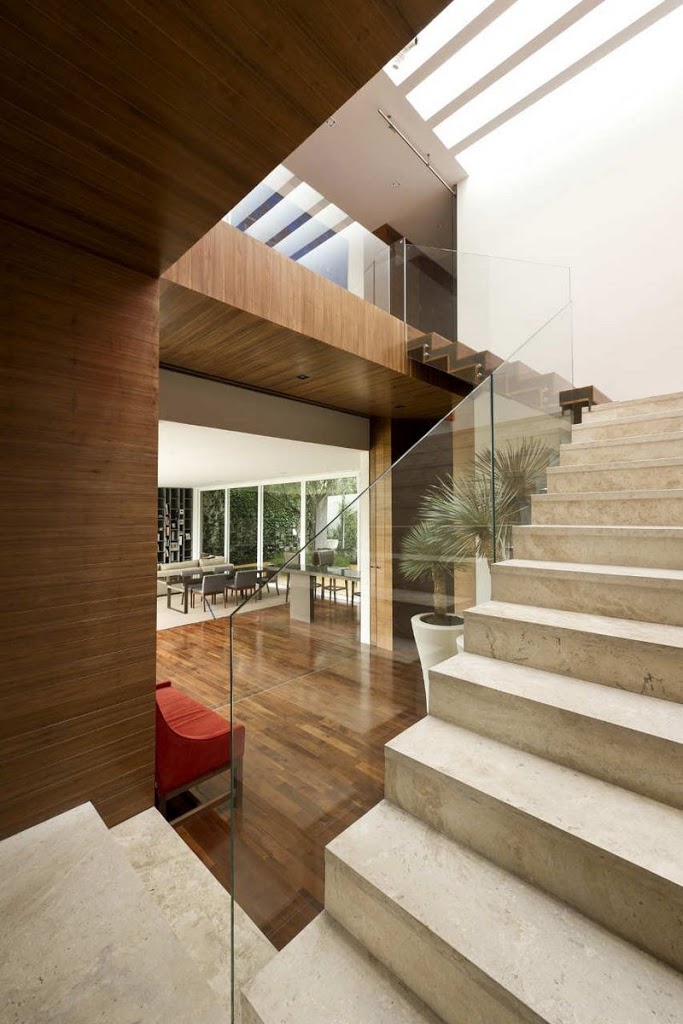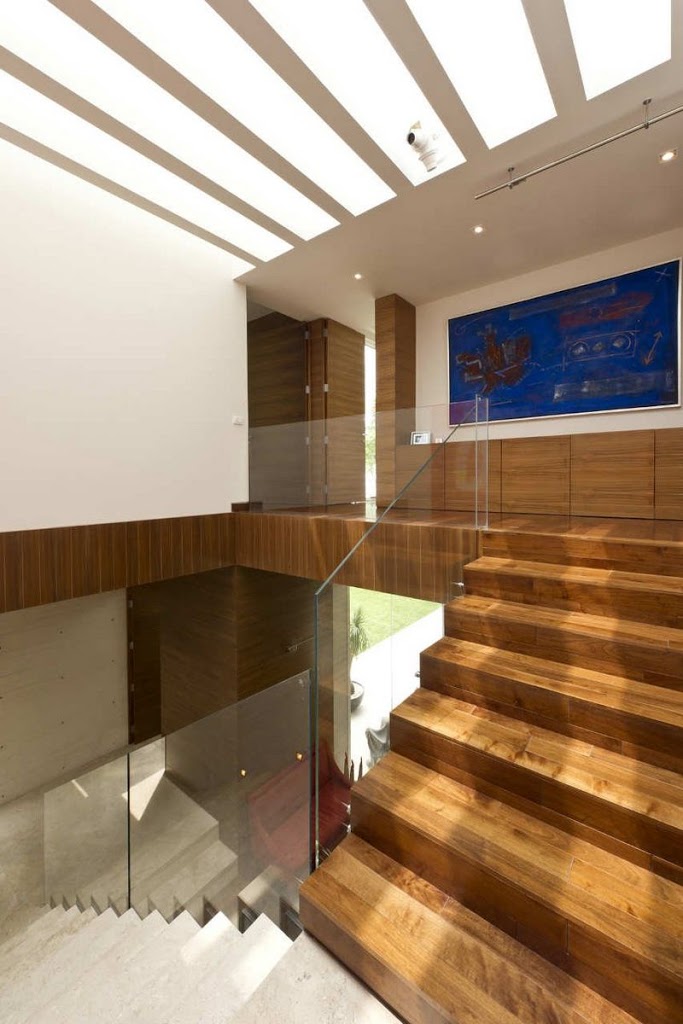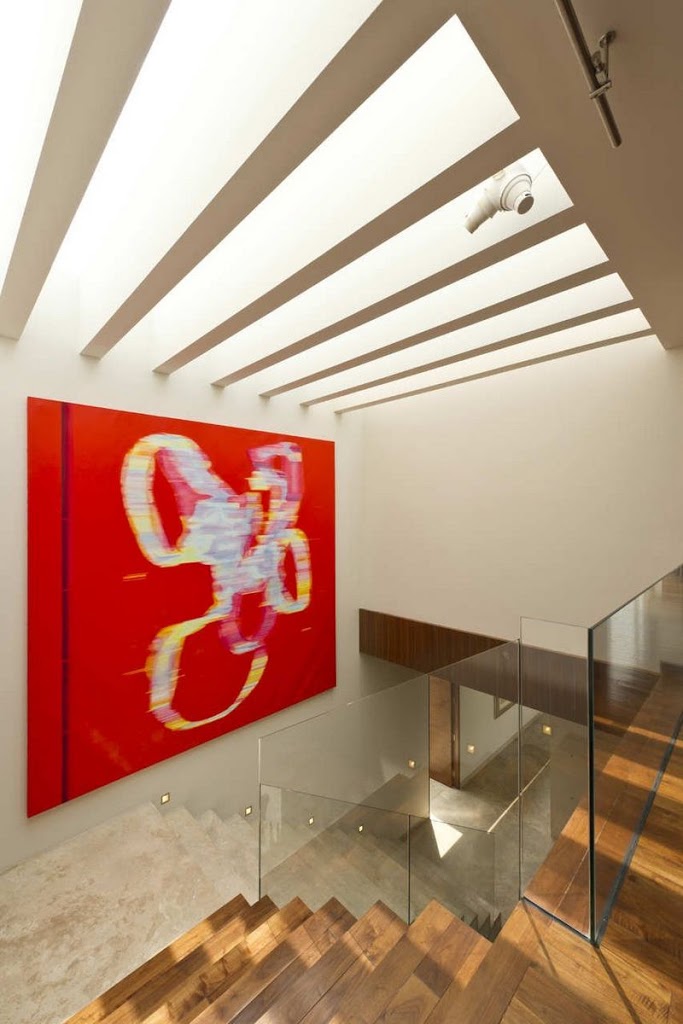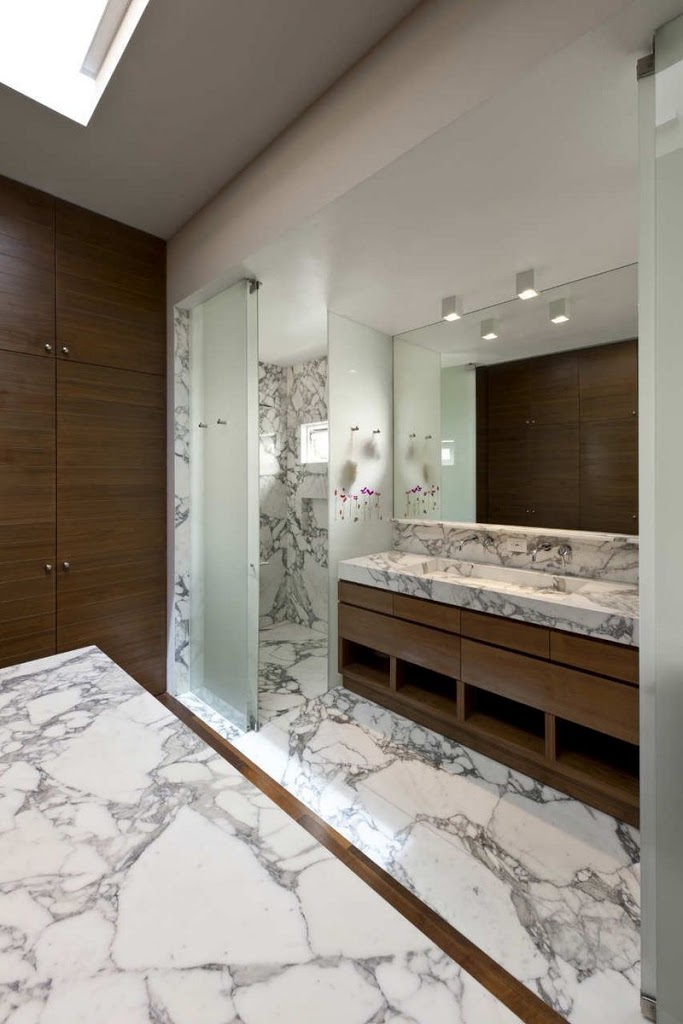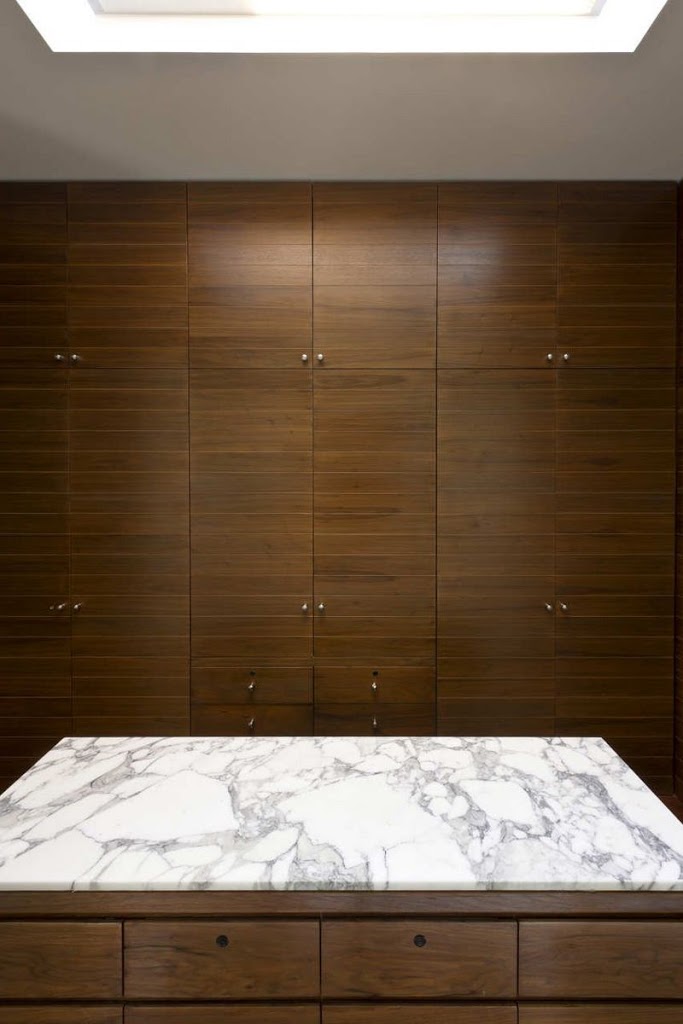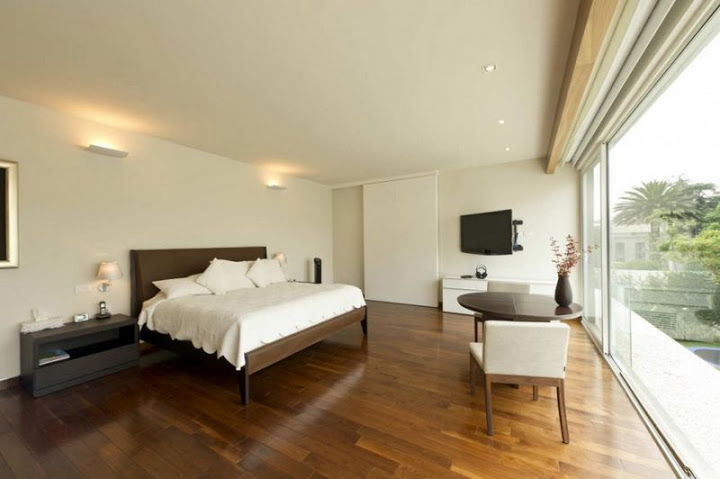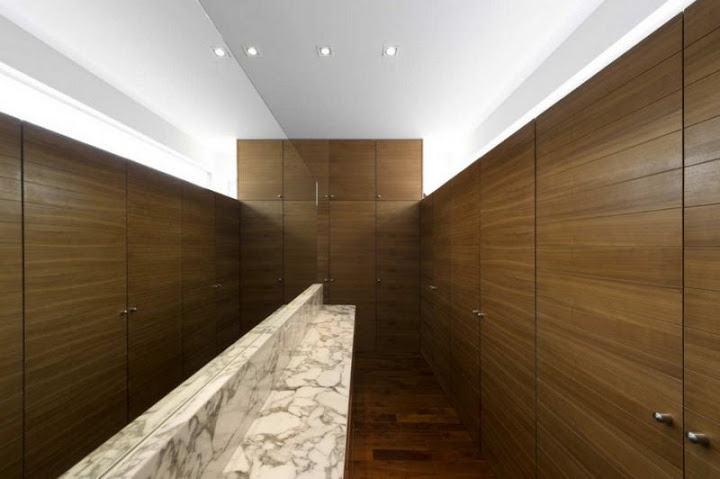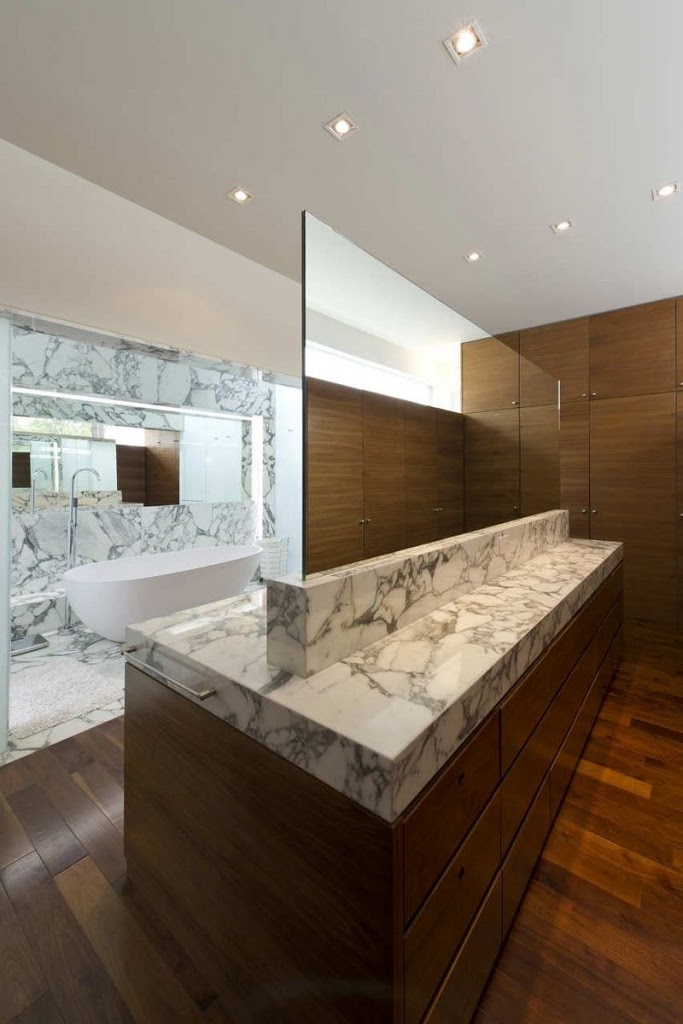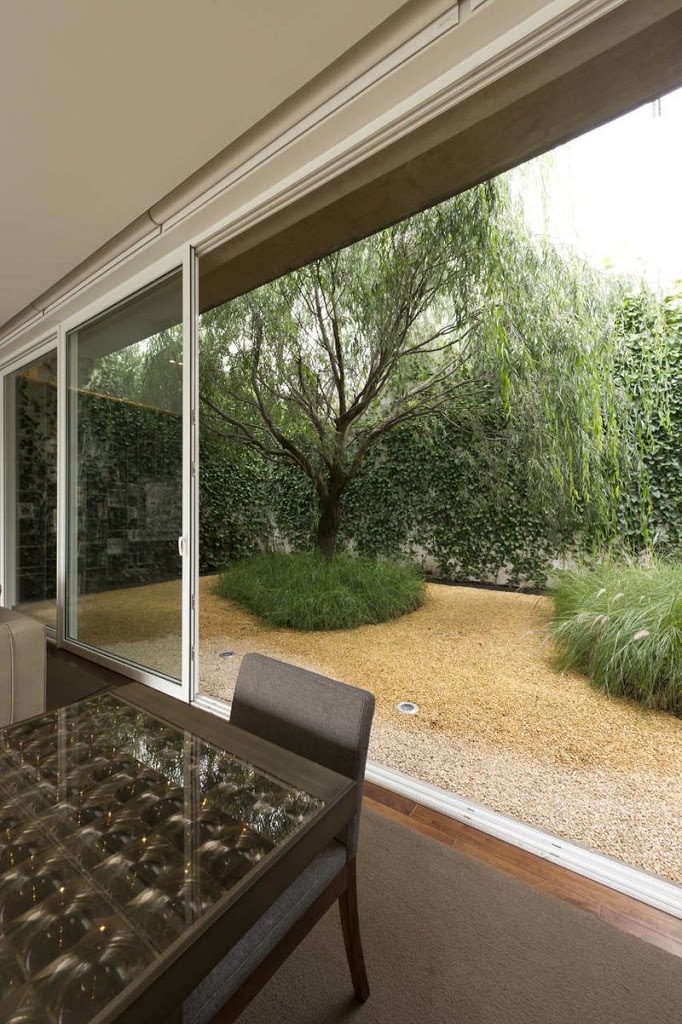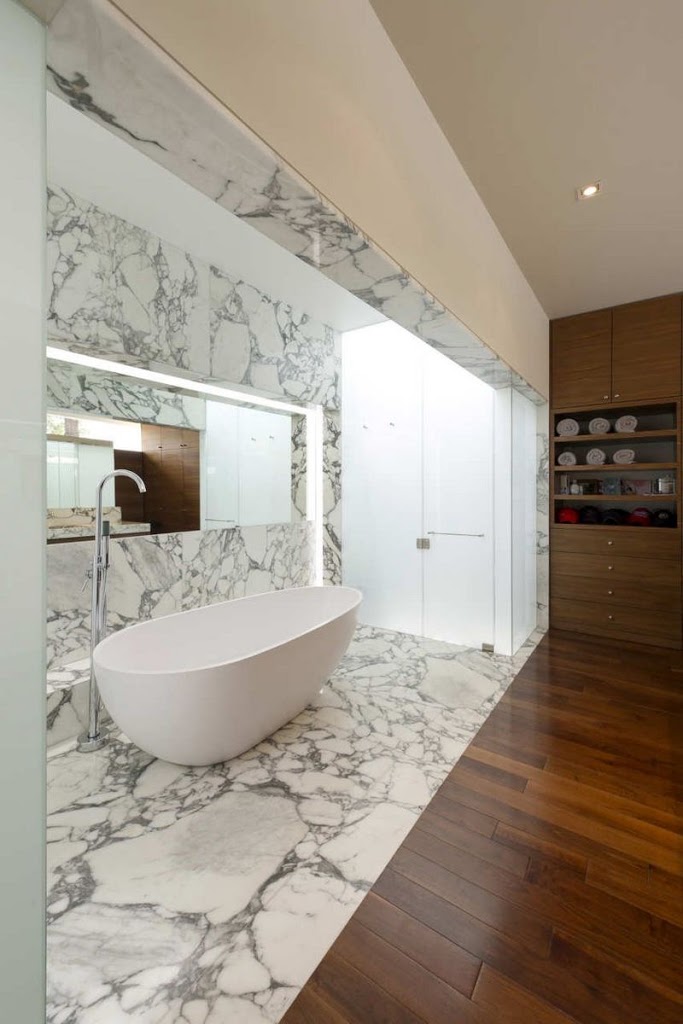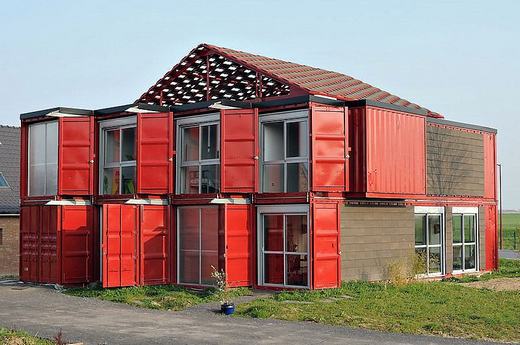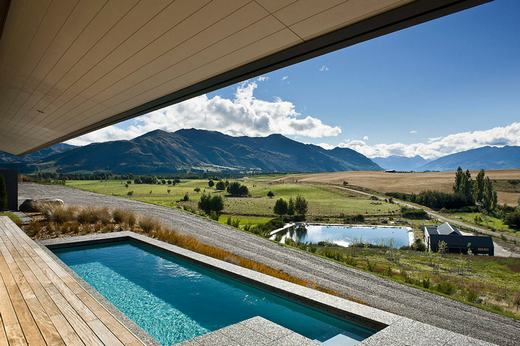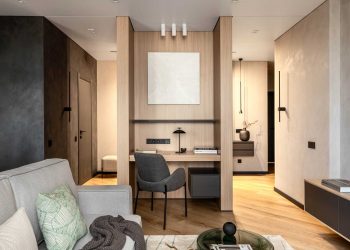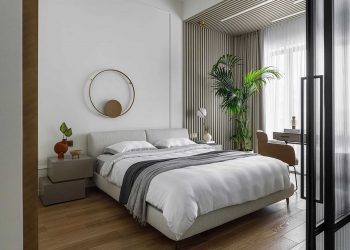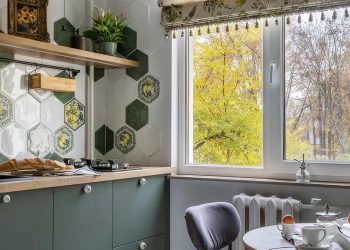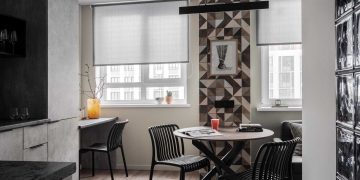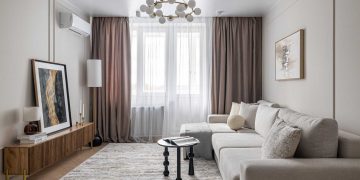A twentyfourseven építész stúdió munkája a kétszintes modern AE Ház Mexico City-ben. A ház tervezésekor igyekeztek szakítani a környék tipikos építészeti megoldásaival, amikor egy központi tömb néz a hatalmas falak közé szorított kertre. Itt a 800nm-es telken egy nagyobb hátsó tömb és egy ebből előre kinyúló keskenyebb tömb ad könnyedebb, világosabb, a nyitott terekkel közvetlenebb kapcsolatot.
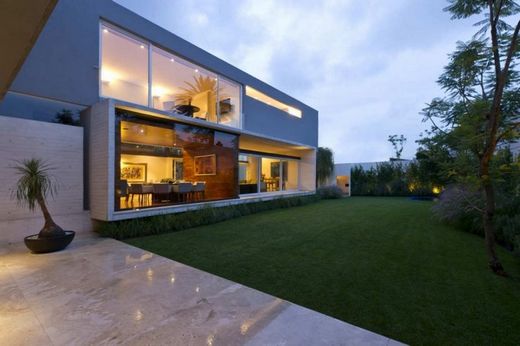
A twentyfourseven építész stúdió munkája a kétszintes modern AE Ház Mexico City-ben. A ház tervezésekor igyekeztek szakítani a környék tipikos építészeti megoldásaival, amikor egy központi tömb néz a hatalmas falak közé szorított kertre. Itt a 800nm-es telken egy nagyobb hátsó tömb és egy ebből előre kinyúló keskenyebb tömb ad könnyedebb, világosabb, a nyitott terekkel közvetlenebb kapcsolatot. A két tömb találkozásánáé létrejött belső tér kinyílik az ég felé. A kertel és a nyitott terekkel való kapcsolatot tovább definiálja a hátsó tömbben elhelyezett nagy nappali, mely a hátsó és első kertekre is nyitott, rálátást adva a telek teljes 40m-es hosszára.
AE house is an exploration on privacy and materiality, the house is situated in Lomas de Chapultepec, in Mexico City, and consists of three levels placed on a 800 m2 / 8611 sq ft site. The house uses the restrictions in the urban plan to its advantage in the placement of the internal spaces, challenging the typical configurations of similar plots in the area. The project offers an alternative to the centralized volumes that are closed and devoid of interaction to their sites and looking outwards through wall enclosed patios.
The proposal of the project changes this interaction by displacing a thick volume to the back of the site while a thin volume is pulled forward, creating by such an action a cross diagram that allows for patios to emerge with views, illumination and natural ventilation of the spaces. The intersection of both volumes creates a central void where the connection between the different volumes opens up to the sky.
The scheme is defined further by lifting the back volume and creating a family living room that becomes the most interesting space of the house, placed in between the frontal garden and a back gravel patio. In this space the full length of 40 mts / 131 ft of the site can be experienced, establishing an everyday relationship between the inside spaces and the external landscaped garden.
The placement of spaces follows the functional requirements of the clients with three living spaces clearly defined while aspiring to create a simple and clear scheme of organization. A social area at the entrance to the house is contained within a white concrete box that opens laterally to the elongated garden, and backwards to a flooded patio, while being fluently open to the circulation within the house. The kitchen and services are placed in a position in which they relate to both the formal and the everyday dining spaces.
The family room perpendicular to the first block performs many functions for the everyday life of the family and in this sense it was the desire of the clients to become one of the main drivers of the project, expressing a new way of living. The private area in the third floor consists of bedrooms which because of the placement of the house acquire views and long perspectives to the lush vegetation of the area defined by Jacarandas and Palm trees. The services are placed in the basement in a functional arrangement while In the lower floor, privacy is negotiated by walls and wooden sliding doors that allow for a filtering of spatial qualities. In the upper floor the position of the house as a cross allows for privacy in the bedrooms within the site as it exposes a minimum front towards the street.
Orientation, views and privacy are the main forces that define the form, while the sensual and aesthetic conditions of the materials employed explore the tectonic interaction between the spaces created by the intersection of spaces and volumes. The project aspired to create a house where the interaction of this forces provoke a sensual and emotional experience of different spatial conditions.
We aspired to create an elegant solution to the condition of habitability integrating the garden to the house in a way in which the family room becomes part of the garden landscape, creating a casual space that is open, serene and integrated to the exterior in a way in which contrasts with the daily experience of the city.
Fotók: Pim Shalkwijk




